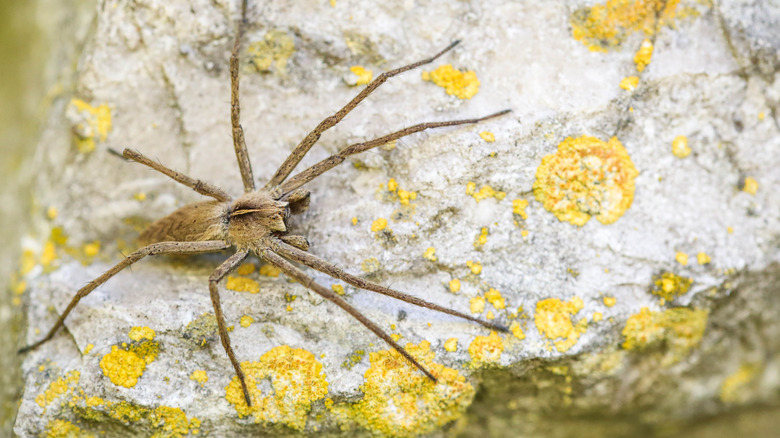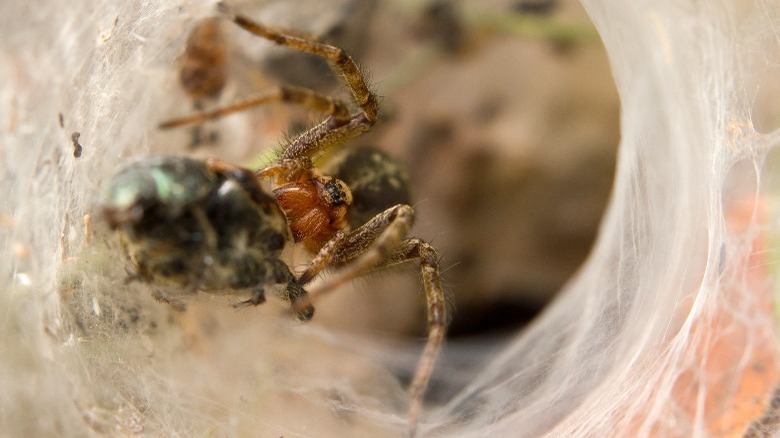Why Hobo Spiders Are The Unsung Heroes Of Household Pest Control
Most people hate sharing their home with anything creepy and crawly — especially spiders. Some spiders look particularly menacing, and if you're unfamiliar with the specific species, you might be wary of all creatures with eight legs. However, the scary-looking hobo spider might be an example of a spider you can learn to coexist within your home. Although its long legs and brown body are intimidating, it can serve a beneficial role in preying on other pests. When it comes to mosquitoes and flies, it might be the unsung hero of the day.
Originally native to Europe, hobo spiders have been found in the Pacific Northwest since the early 1900s. These spiders like dark spaces and cooler temperatures, so if one takes up residence in your house, it will choose a secluded spot, like in the basement or under the foundation. They might be so discreet that you don't realize they are even there, lurking in tubs and sinks.
Hobo spiders are funnel web spiders who build sophisticated, tube-shaped webs to catch their prey. A member of the Agelenidae family, the hobo spider can sometimes be indistinguishable from its closely related fellows. It can be challenging to spot the difference between a wolf spider and a hobo spider or other look-alike arachnids like the giant house spider. When in doubt, always ask for an expert's opinion.
Leave them alone and let them work
You can breathe a sigh of relief if you are hosting a hobo spider as a guest. Despite some studies completed years ago, there has mainly been no new evidence to suggest that hobo spiders have a dangerous, flesh-eating bite. This myth has led people to jump to the wrong conclusion about hobo spiders, even though they are a nonaggressive species. Leaving hobo spiders in small numbers around the house and lawn can aid in managing pests.
By letting them coexist in your home, you can let hobo spiders do what they do best and kill annoying pests. Their sticky funnel webs target flying insects like mosquitoes, flies, and gnats by trapping them. Hobo spiders also are known to capture cockroaches and beetles. Most hobo spiders are active at night, which means they do the work of pest control while you're sleeping. You likely would not even encounter one unless you poke around in dark areas.
Even though the hobo spider might help you manage pests throughout the house, you probably don't want an infestation of them. There are easy ways to encourage hobo spiders to leave your home alone, like sealing cracks, and you might be making common mistakes that attract spiders to your house. Reach out to an expert in pest control if you suspect that a few too many hobo spiders have made themselves at home. Other ways to minimize hobo spiders include finding ways to help prevent clutter from accumulating in your home.

